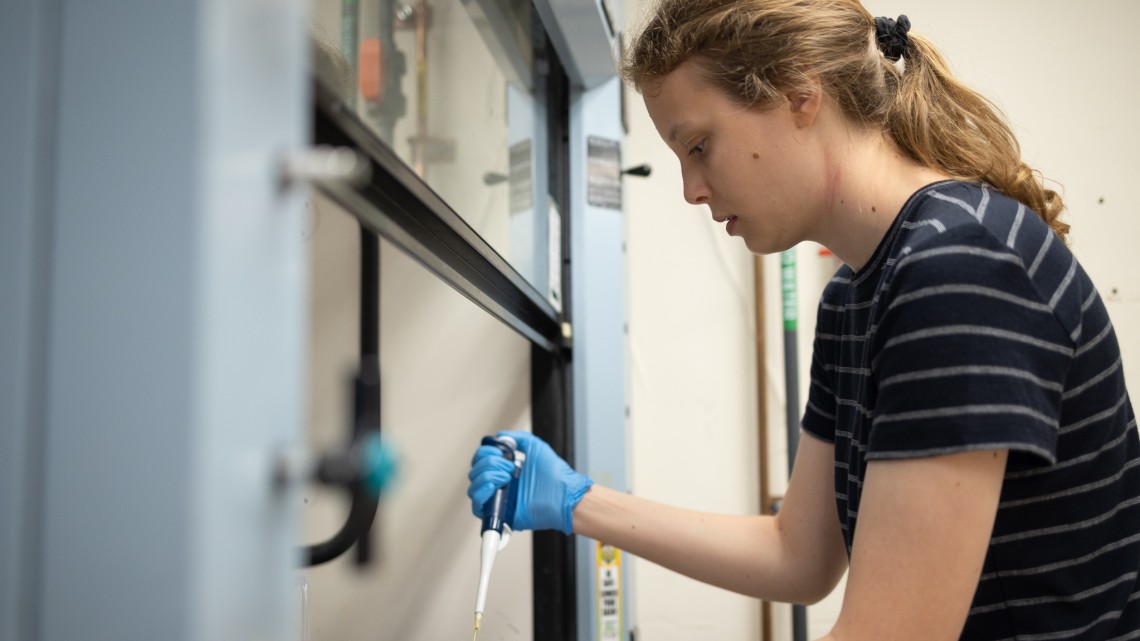
Bea Pence '24 and other students in a chemistry lab are working on samples that could make it possible to use various organic materials to shape the future of solar or change the way chemical reactions are performed.
News directly from Cornell's colleges and centers
Student researchers explore changing chemical reactions
By Kathy Hovis
As part of Ryan Pinard ’25’s summer research project, he’s hoping to create a chemical sample that’s never existed before —with a cavity that could hold liquid between two reflective surfaces. The sample could make it possible to use various organic materials to shape the future of solar or change the way chemical reactions are performed.
He’s one of seven undergraduate researchers on campus this summer in the lab of Andrew Musser, assistant professor of chemistry and chemical biology in the College of Arts & Sciences. Pinard’s work, as well as the work of Anthony Lara ’25 and Bea Pence ’24, is supported by grants from the Nexus Scholars Program.
Musser’s lab has grown from three undergrad researchers last year to 15 this year, an expansion that Musser says was aided in part by Nexus Scholars Program funding and his own desire to open his lab to more undergrads. His lab also includes six graduate students and two postdoctoral researchers. His research uses ultrafast laser spectroscopy to understand how organic semiconductors behave when they absorb and emit light.
Read more about the students in the lab on the College of Arts & Sciences website.
Media Contact
Get Cornell news delivered right to your inbox.
Subscribe
